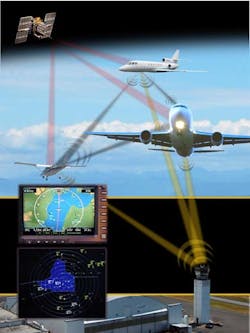European Commission to examine implementation of ADS-B compliance schedule
LONDON -- The implementation of a European Commission plan that would require airspace users to meet automatic dependent surveillance-broadcast compliance requirements by June 7, 2020, is being reexamined after lobbying work by the European Regions Airlines Association.
The European Commission has stipulated that all aircraft operating in its airspace have automatic dependent surveillance-broadcast (ADS-B) systems meeting the DO-260B standard.
However, according to the European Regions Airlines Association (ERA), the technical challenges and fiscal hurdles of meeting the requirements could be prohibitive for some operators, potentially creating a "disproportionate or unnecessary burden on airlines that would in turn affect passengers, business and local economies."
The European Commission has now decided to consider possible exemptions, or to provide a degree of flexibility based on a willingness to comply. The EC has also proposed an incentivization program for retrofits, and will be working with Single European Sky ATM Research (SESAR), European Aviation Safety Agency (EASA) and other industry stakeholder on a consultation campaign that is to be completed by the end of this year.
"I'm very pleased that the European Commission has successfully collaborated with the aviation industry regarding ADS-B implementation and has taken our concerns into account," said ERE Director General Montserrat Barriga.
The cost of compliance
A recent SESAR report found just 20 percent of Europe's in-service commercial fleet is equipped to meet the 2020 deadline, citing a lack of coordination amongst EC member states in the construction of ground infrastructure and a lack of implementation plans amongst operators.
The price of installing the avionics necessary for compliance would, according to EASA, range from $60,000 on the low end to more than $500,000 for larger and older aircraft, making the conversion of an entire fleet costly.
And though the airlines surveyed in SESAR's study have indicated an overwhelming willingness to meet the ADS-B requirements, many operators have limited their upgrades thus far to their long-haul craft that are traveling to regions where similar stipulations already exist.
As it stands, meeting the EC's deadline remains questionable.
"The retrofit of the complete European fleet is just impossible at this point in time," said Jurgen Lauterbach, purchasing manager at Lufthansa, during a recent EC seminar in Belgium. "It's not possible. We'd like to support the project, no doubt, but we need to start with reliable plans from now."
